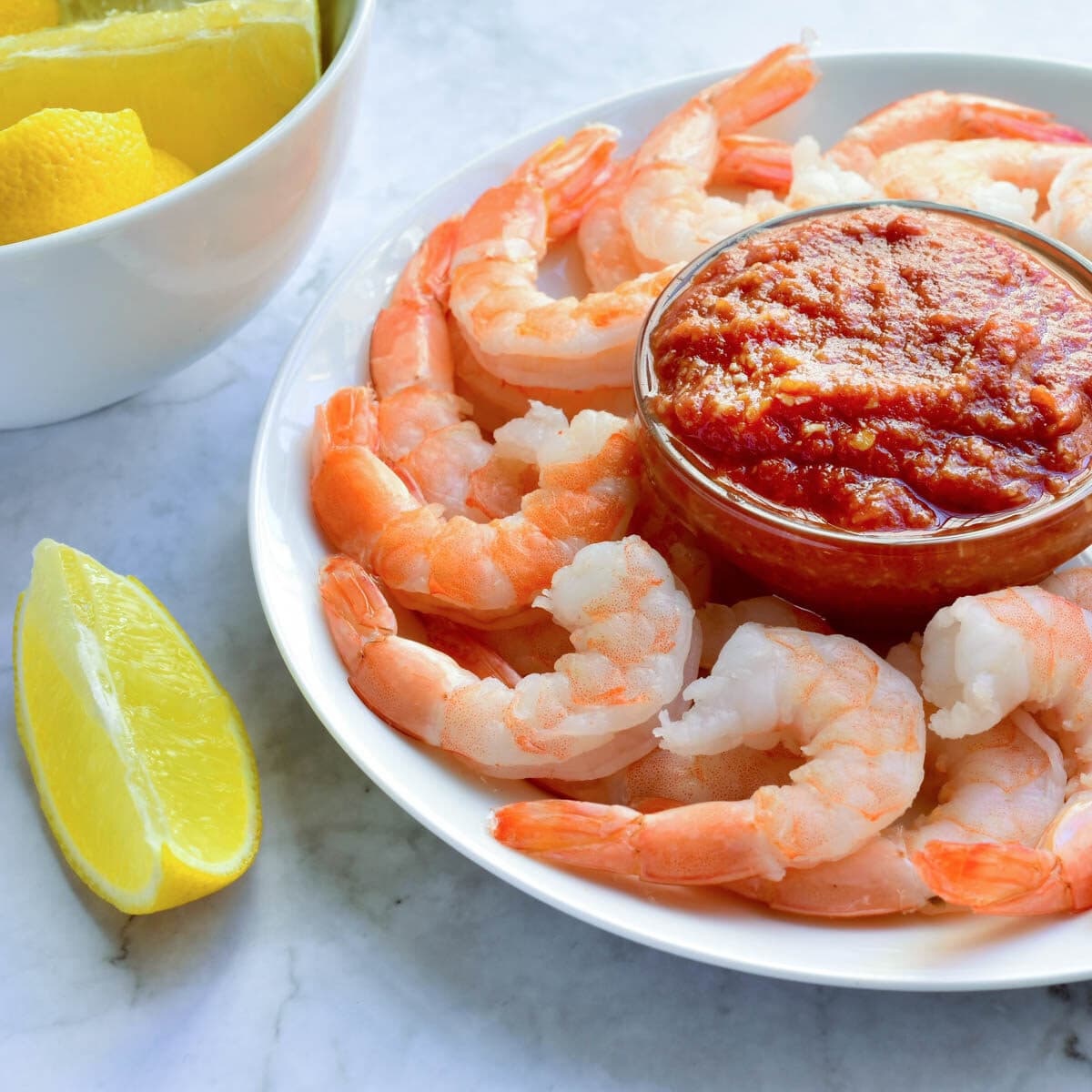How To Tell If Shrimp Is Bad
Shrimp is a great appetizer with a spicy cocktail sauce or shrimp scampi. Either way, it is imperative to know how to tell if shrimp is bad.
You really do not want to mess around with seafood raw or cooked if you think that it might have spoiled. The smell alone will tell you if you need to throw it out but there are also a few other ways to tell also.
Eating bad shellfish is one of the most common causes of food poisoning. It isn’t something you want to take a chance at or mess with.

How to tell if shrimp is bad? Shrimp that is cooked or raw should not have a fishy smell or the aroma of ammonia. The texture of bad shrimp will be slimy and they will look faded in color.
How to tell if shrimp is bad
Eating bad seafood is never a good idea. If you suspect that your shrimp is spoiled then it should be thrown away. Using your senses is always the best way to figure out if shrimp is bad.
When you are in the store buying raw, cooked, or frozen shrimp you want to look and make sure they look and smell ok.
1. Foul smell
Raw shrimp that is bad will have a fishy smell to it or the scent of ammonia. Both are indicators that your shrimp isn’t good and therefore not safe to eat.
Fresh shrimp that is shelled or unshelled shouldn’t have much of a smell at all besides a little salty like saltwater. The ammonia smell is caused by bacteria growing on the shrimp and will likely cause food poisoning.
Cooked shrimp that has gone bad will give off an unpleasant sour smell. It will be obvious and you will when you smell it.
Always ask to smell the shrimp at the seafood counter and ask to smell it before you buy it.
2. Off in color
Fresh raw shrimp will be light grey or whitish in color and look somewhat transparent. If they look faded or off at all then they are likely going bad or have already spoiled.
If the shells look like they are no longer attached to the body or if they have black spots on them they aren’t safe to eat.
Cooked shrimp will be an opaque whitish color with some pink and red as well. If it looks faded in color, grey, or moldy at all then toss it out.
If you’ve properly frozen your shrimp using our guide on ‘How to Freeze Shrimp,’ it can help extend their shelf life and maintain their freshness, thus reducing the chances of them going bad prematurely.
3. Slimy
You do not want slimy shrimp. Whether it has been shelled, not shelled, or cooked, slimy shrimp means that they have gone bad.
Another thing you want to look for in bad shrimp is if the shell is broken. Make sure that the shells are intact and look healthy before serving them.
If you haven’t tried cooking your shrimp in the air fryer yet, you are missing out! Check out this great air fryer shrimp recipe!
Proper storage is key to preserving shrimp’s freshness and preventing spoilage. Always remember, when in doubt, it’s best to throw it out to ensure food safety.
Frequently asked questions about how to tell if shrimp is bad
Conclusion
In conclusion, determining if shrimp has gone bad isn’t tricky once you know the signs. Pay close attention to its smell, color, and texture.
Strong ammonia or sour odor, faded or discolored spots, and a slimy or mushy texture are all clear indicators of spoiled shrimp. Always remember, when in doubt, it’s best to throw it out to ensure food safety.

Online Cooking for Beginners Course